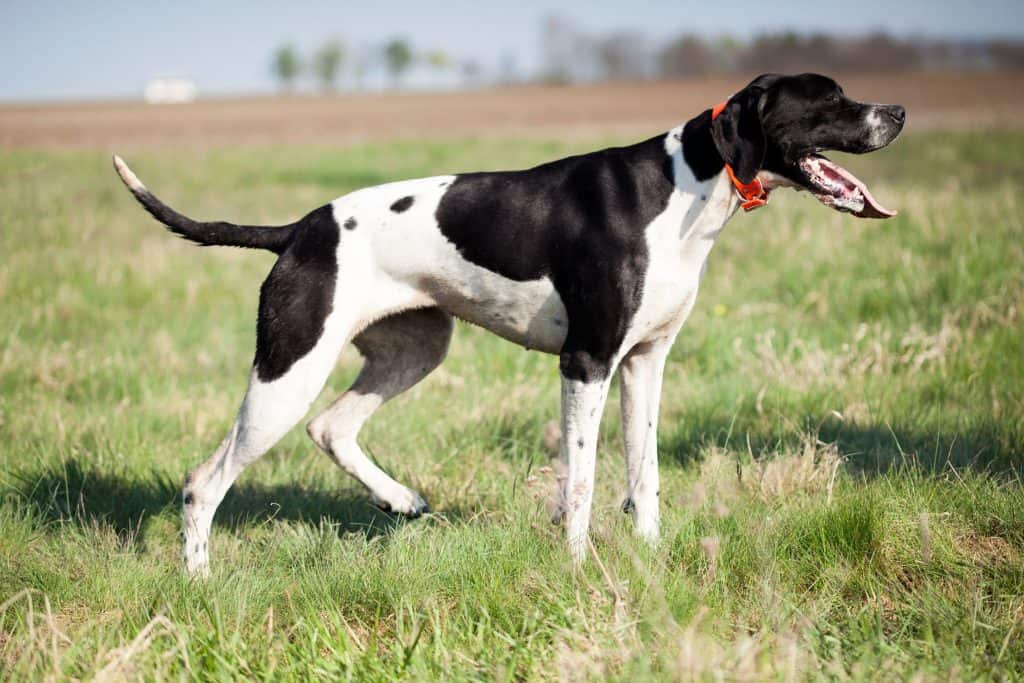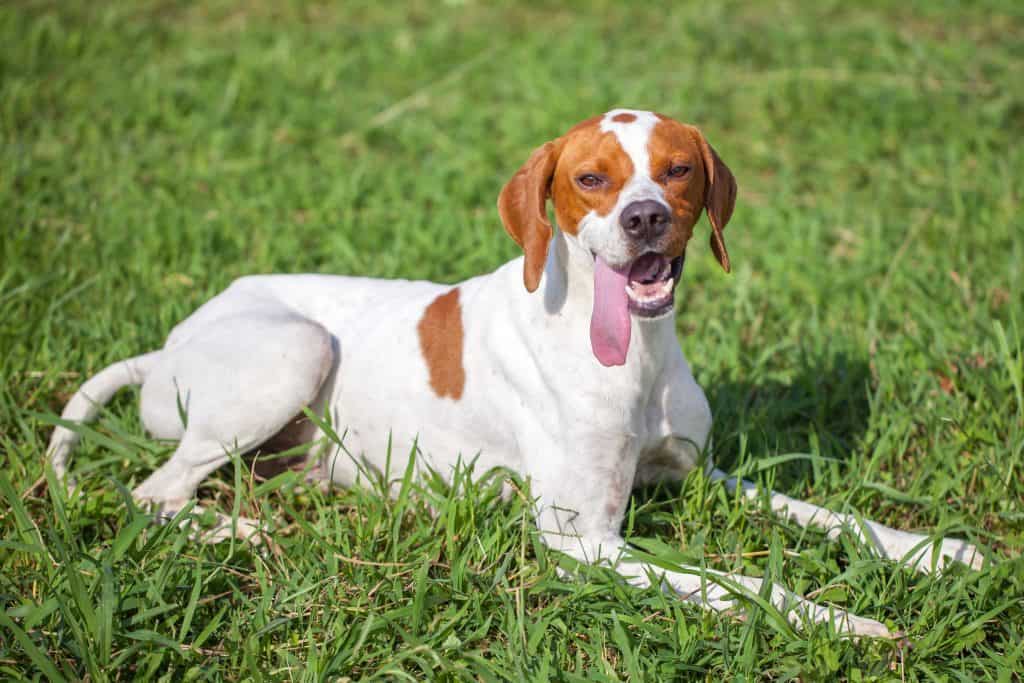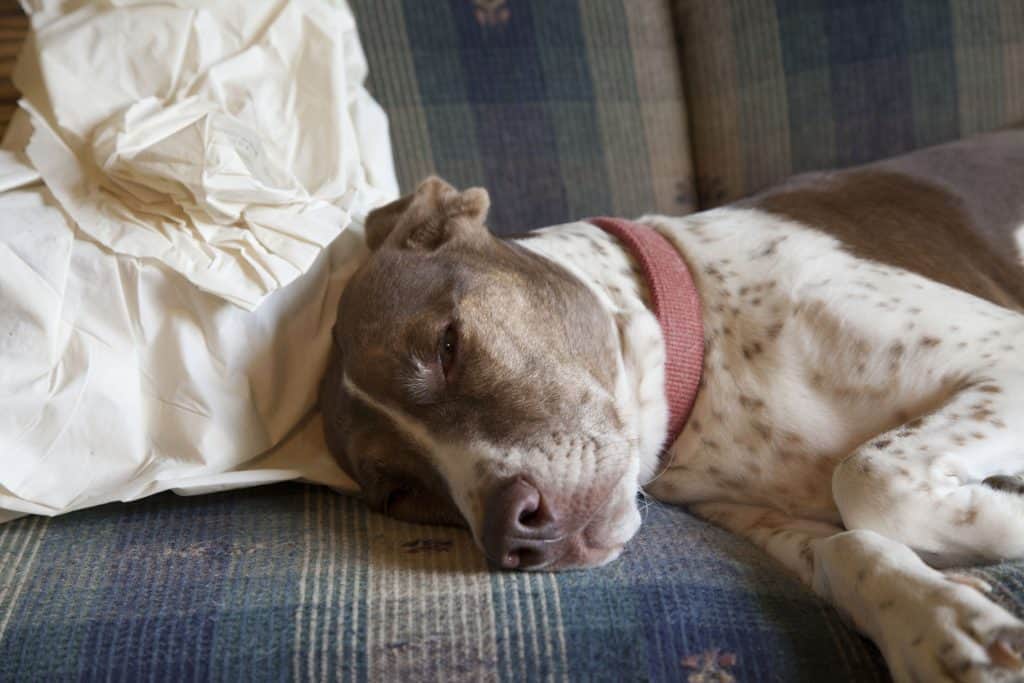Are Pointers Hypoallergenic? Tips for Families with Allergies.
If you have allergies, it is important to know if a pointer is going to be hypoallergenic or not. Many dogs fit that category depending on how much they shed and spread allergens.
Are Pointers Hypoallergenic?
Pointers are not hypoallergenic. They shed minimally but enough to cause problems for people with allergies. This breed may still be a good option for owners who have less serious allergies.
Knowing whether a pointer claims the title of “hypoallergenic” or not shouldn’t dictate if you can/want to have one. There is a lot more to hypoallergenic dogs than many people know. Additionally, there are things that you can do to make your pointer better suited to your allergies instead of just writing them off.
Pointers and Dander
A lot of families avoid pets because of the inevitable problems that befall allergy sufferers when pet dander is present in the home. Many people search for hypoallergenic dogs in hopes that those specific breeds will be the solution to their problems.
Many people believe that dog hair is the source of their allergy problems. That is not entirely true; it’s one of the causes but not the source. Dander is the real culprit that causes your nose to itch and your eyes to water.
Dander is described as the small flecks of dead skin that fall off your pet. It’s impossible to have a dog that is completely hypoallergenic because all dogs produce allergen causing dander on some level.
Pet hair and pet saliva are the carriers of this dander, and this is how allergens become a problem in your home. Even hypoallergenic-categorized dogs are going to drool/get saliva on you at one point or another.
It’s important to note that the dander isn’t just transferred through a dog’s fur, so having no hair loss isn’t the be all end all of the allergy solutions. On the other hand, the hair is the main carrier and spreader of dander in homes with pets, so a hypoallergenic animal does help to reduce allergy flare-ups (but doesn’t make them disappear completely).
Pointers have very short fur covering their bodies. They do shed, but it’s not a huge problem for owners. They are not classified as “hypoallergenic dogs” because they do shed some.
Compared to other breeds, the pointer’s shedding is not very significant but it is still present and a factor that should be considered when thinking about buying one for a home with allergies.
What Makes a Dog Hypoallergenic
What comprehensive lists of “hypoallergenic” dog breeds are actually showing you is which breeds tend to produce the least amount of hair and dander. Hypoallergenic does not equate to completely allergen free.
A lot of people believe that they are going to be 100% safe from allergens when they buy a hypoallergenic dog; but, that’s not always the case.
Every dog is going to give off some dander. It’s dead skin; dogs have to get rid of it somehow when it’s no longer being useful. Hypoallergenic dogs tend to shed significantly less than other breeds; therefore, they don’t cause as many issues for people with allergies.

Some of the more popular hypoallergenic dog breeds to date are mixes of a more mainstream breed (such as Labradors and Golden Retrievers) with another breed (like a poodle) that is known to have minimal shedding.
In these cases, you can never be entirely sure how much of the more “hypoallergenic” breed is being introduced into the puppies. Perhaps Mom is a poodle and Dad is a Golden Retriever. It may sometimes happen that the puppy inherits the Golden Retriever coat and all hopes of a hypoallergenic dog fly out the window.
Never rely on a hypoallergenic dog to be the solution to your family’s allergy problems. Depending on the severity and sensitivity of the allergies, a dog that sheds less will work out just fine. For those that are extremely sensitive, no dog may be the option.
Always consult your doctor if you’re not sure what you can handle in terms of living with pet dander.
Pointers and Shedding
Pointers have very short coats, but that does not mean that they don’t shed as much as breeds with longer coats.
I’ve owned short-haired chihuahuas my whole life, and let me tell you, they shed like crazy! Those itty-bitty hairs attach themselves to every surface!
You wouldn’t think that would be the case when you look at them, but let them sit on your lap for a few minutes and your black pants will be covered in tiny white hairs.
All in all, short hair does NOT equal less shedding. There are different opinions in how much a pointer sheds. English pointers seem to shed a bit less than German shorthaired pointers, and wirehaired pointers shed even less than English pointers.
What they all have in common is shorter hair. The English pointer is said to shed minimally and only requires occasional brushing to keep it in check.
German shorthaired pointers don’t shed an obscene amount but do give off a bit of hair around the house. Frequent brushing is enough to keep a lot of that hair under control.
Grooming your Pointer
In regards to allergies, one of the most important grooming practices is giving your pointer a bath to get rid of excess hair and dander.
It can sometimes seem like a big task to bathe your dog because of most dogs’ general distaste for it. It is an important thing to get in the habit of doing if you or another member of your family has allergies because a bath can greatly minimize the presence of dander in your home.
Pointers typically have very short, smooth hair and don’t require regular bathing. The advice varies on the subject, but most experts suggest a bath once a month or less frequently for pointers.
This advice changes depending on certain individual factors. Your dog may need a bath outside of a prescribed timetable if you have a malodorous pup.
Pointers are known for their high energy levels and general exuberance and zeal for life. They require a lot of exercise and time outdoors. If your pointer acts as your hunting companion, he/she will spend a lot of time running around outside for hours on end.

These factors may change the frequency of baths especially if mud, dirt, or any other dirty/smelly things were rolled and played in.
Generally speaking, your pointer will not require frequent bathing, but you can bathe them whenever life calls for it.
The general task of “grooming” your pointer will come in a lot of forms. Giving your dog a bath is always at the top of the list, but there are other tasks you should also complete to have a well rounded healthy dog.
You should trim your pointers nails regularly, especially being that they are such an active breed. Long nails can split and crack hurting your pointer when they run or play.
It’s also important to keep your pointer’s ears and teeth clean. For more active pointers, you’ll want to do frequent checks of the paws, fur, and ears to make sure they haven’t been cut or have collected anything you don’t want to stay in the house.
Your pointer will never like these activities, but if you’re patient and start them young then they will get used to the routine and won’t put up a fight every time.
Tips for Bathing Your Pointer
- Use lukewarm water. You don’t want it too cold, and you definitely don’t want it scalding hot. Check the temperature before putting your dog in.
- Invest in a good and gentle dog shampoo. You don’t want to strip off all the oils from your dog’s coat; you just want to get them clean. (Consult a Veterinarian if you’re unsure of what to use for your pointer’s skin type.)
- Be patient. Some dogs are scared of baths, and you don’t want to overwhelm or frighten them.
It is important to be careful not to bathe them too often, though. This will depend on your individual dog and if they have any skin conditions. Sometimes a dog’s skin can become dry and flaky if they’re bathed too often because it strips some of the natural and healthy oils from their skin.
If you see this happening, minimize the number of baths given and consult your veterinarian. They may prescribe a shampoo or other medication that requires less or more frequent baths depending on the problem.
Brushing Your Pointer
Because of how short pointer hair is, you really only need frequent brushing to keep them clean and healthy. Brushing them once a day or a couple of times a week can help rid them and your home of excess hair and unwanted dander.
Short to medium length coats on dogs don’t need as much bathing attention because they’re pretty good at controlling the oils that are produced.
If you invest in a good brush that will last you a long time, you will be able to regulate your pointer’s shedding easily. Here’s a good example from Amazon of a brush that will help get rid of excess hair and keep your pointer’s coat shiny.
It is best to brush your pointer outside, so the loose hairs don’t get stuck to any surfaces like couches or the carpet.
Frequent brushing will go a long way in helping lower the amount of dander in your home. When you brush out the excess hair before it has a chance to get rubbed into your furniture or float to your floors, you are able to minimize the allergens being spread around your home.
You and your kids will be able to breathe easier and how often you have to clean your home will go down. It’s a win-win for little effort if you ask me, and most dogs really enjoy a good brush! Happy dog, happy life!
Tips to Minimize Problems with Dander in the Home
If you’re interested in the pointer as your next family pet, there are ways to reduce the effects of the pet dander in your home. Being proactive in the care of your dog can help contain the spread of allergens that may affect sensitive members of your family.
Here are some tips that can help keep the dander levels in your home down.
1. Make Bedrooms Off-Limits
Depending on the owner, dogs may be a welcome friend in sleeping areas. This isn’t a good idea when it comes to allergens because hair can stick to your bed and cause you issues while you lay on it and sleep.
Even if your dog isn’t allowed to sleep on your bed with you at night, you will want to establish in training that the bedrooms are off limits at all times.
Pet hair is notorious for floating in the air and getting caught on anything in sight. If your pointer is allowed to hang out in your room throughout the day then you may be just as susceptible to dog hair in your bed as when they actually sleep there.
It’s also a very good idea to keep pointers out of the bedrooms of kids who have allergies.
It’s an easy fix to create parts of the house that are dog-free. Dog-free doesn’t mean 100% dander/hair free because it can be brought in on clothes or shoes, but it is a huge step up from the actual dander culprit spreading it around the room first hand.
2. No Dogs on the Couch
The same rule as above can be applied to furniture. Pointers are known for cuddling up to owners on the couch after a long day, but if allergens are a big concern for you then the couch may be another good place to keep dog-free.

Some owners may think the solution is to just keep their dog outside all the time. This is helpful for a lot of families, but pointers are a breed that truly loves to be inside.
They are the happiest when they get to be around their families and interact with them throughout the day. Another factor that comes along with keeping them outside in the harsh extremes of weather that exist depending on where you live.
Pointers can certainly live outside, but it’s important to take the right precautions to keep them healthy and happy while they’re out there. These are just some characteristics of pointers that you must take into account before introducing them into your home.
3. Brush Your Pointer Regularly
I touched on this point earlier in the post, but brushing your pointer is a HUGE help in keeping unwanted hair out of the house. It’s not going to be a perfect solution but it will definitely make a difference.
This is also a task that kids can easily complete without needing too much direction or supervision.
4. Wash Hands
Another simple tip that could go a long way is teaching your kids to wash their hands often.
If it becomes routine that your kids wash their hands after touching the dog or before eating food, they will be safer from the effects of dander.
5. Invest in a Powerful Vacuum
The least fun of all the options is simply to clean your house often. Vacuuming the floors daily or a couple of times a week can keep hair from piling up on hardwood floors or building up in carpets.
You can also get a vacuum that allows you to remove the nozzle and vacuum the couch. These precautions may be taxing to have to do so often, but you will greatly benefit from removing the hair that inevitably falls from your pooch throughout the course of the day.
Again, all of these precautions will vary depending on the severity of the allergies. Pointers can be fantastic companions, but there are definitely some extra steps you have to take in life to really make them worthwhile when allergies exist.
6. Consult Your Doctor
Pointers are not included in the “hypoallergenic” category of dog breeds, but they are still a good bet as a dog that doesn’t shed too much and is easy to groom.
If you have allergies but really want a pointer (or any dog), consult your doctor to see your options. Allergy shots, medication, or other medical assistance could help make your dog ownership dreams a reality.
